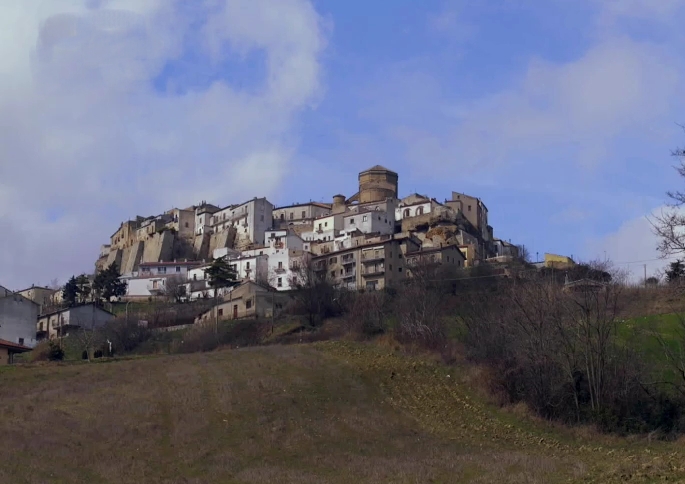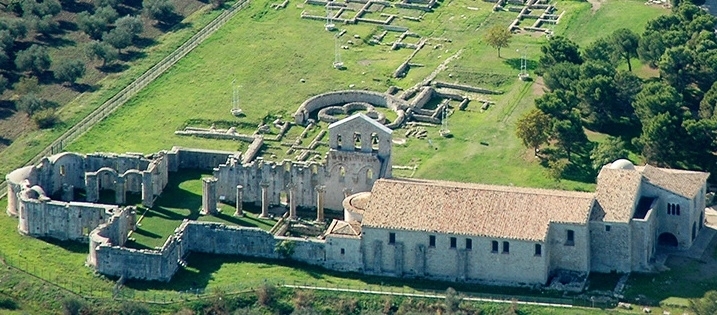Basilicata, a land full of hidden treasures
Basilicata is a land full of hidden treasures, and its ancient villages are among its most precious gems. From medieval villages perched on the mountains to coastal towns bathed by the splendid Ionian Sea, every corner of Basilicata will surprise you with its authentic beauty and its thousand-year history. Here, in the villages of Basilicata, walking through charming alleys and historic squares, you will find the true and intact Medieval Atmospheres, so much so that time seems to have stopped hundreds of years ago. There is no shortage of art and culture through its thousand-year-old churches, museums and popular traditions that make this region so unique. You will be able to delight your palate with the authentic flavors of Basilicata cuisine, from traditional dishes to unique local products.
Acerenza
Acerenza located on a tuff cliff over 800 meters above sea level
From the urban point of view, the town follows the typology of the medieval walled citadel.On the whole panorama of the village, the imposing Cathedral stands out to get to know it, you have to walk around it, scrutinizing the ancient stone walls, going in search of the little secrets, turning them around the narrow alleys the Cathedral reveals its first treasures, here they are, the marbles of the Roman age, the carved figures of time-worn tombstones, the Greek-made columns. every detail is precious. after visiting the Cathedral, you can walk through the alleys and linger on the splendid eighteenth-century noble palaces. Ggiunti on Lake Gianturco, you can see Palazzo della Curia, Palazzo Gala and the church of San Vincenzo.
In Acerenza you can't help but enjoy a glass of Aglianico, it is a ruby red wine but, the territory also offers the typical sausage and soprassata acheruntina and an excellent extra virgin olive oil ..
Venous
Venosa is an Italian municipality in Basilicata, also known as the "Horatian city" for being the birthplace of the Latin poet. It is one of the municipalities registered in the association "the most beautiful villages in Italy". The charm of Venosa immediately stands out to the visitor when it is reaching the city, admiring its position within the Lucanian Apennines, in a setting of inestimable beauty. many tourists are attracted to visit the house of Horace, but the city of Venosa is a real jewel that ensures relaxation and entertainment that are perfectly combined with history, art and culture. where it is possible to admire the ancient Roman baths, the remains of Roman villas, the catacombs and the wonderful amphitheater. the remains of a village dating back to the Paleolithic era are also very interesting. the historical interest is also due to the remains of the Lombard Castle and the Aragonese Castle. Venosa's artistic masterpiece is the Unfinished church, this church has been given the name "unfinished" precisely because it was started by the Benedictines and was never completed. when you are in front of it, you are truly amazed. because its entire complex is made up of several buildings belonging to different eras and styles. Further sites of interest in Venosa are represented by the cathedral of Sant'Andrea , of a unique beauty characterized by its naves on which there are pointed arches, again, by the church of San Rocco and San Filippo Neri and by the various artistic fountains that are found in the city.
Venosa boasts an excellent culinary tradition, one of the most popular recipes is that of "strascinati", a very appetizing pasta that is seasoned with sauce and cacioricotta.
Climate, curiosity and advice
Climate: Basilicata is a region of strong contrasts from a climatic point of view, partly Mediterranean climate and partly temperate and cold.
Curiosity: one of the main symbols of Basilicata as well as of Italy, second in size only to the Christ of Rio de Janeiro: the Christ the Redeemer of Maratea is a striking statue that reaches 21 meters in height, with an opening of the arms of about 19. The world-famous statue is made of reinforced concrete covered with a particular mixture of concrete and Carrara marble, which gives the work that particular white color. The Cristo is positioned on top of a hill, with a spectacular viewpoint .
Advice: to celebrate San Giuseppe, large and spectacular fires are lit to participate in the Palio dei fuochi. Each neighborhood will organize its own bonfire, the best for hospitality, entertainment and gastronomy will win the Palio.



